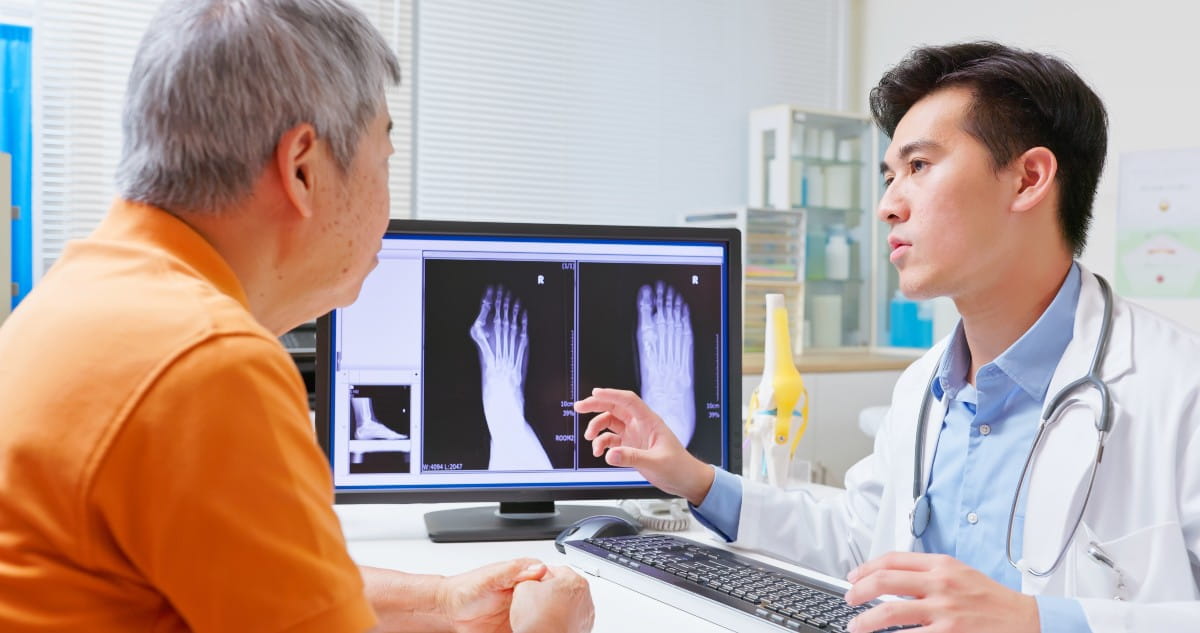Throughout the body, healthy veins work to return the already circulated blood back to the heart. Veins contain tiny valves that keep blood from flowing backwards. However, due to various reasons, these valves can weaken, allowing some portion of the blood to pool in the veins. This is especially true in your legs where the veins are working against gravity to pump the blood back up to the heart.
Varicose veins appear just under the skin, most commonly in the legs. They generally appear as a dark purple or blue color and look enlarged and swollen. Spider veins are also just under the skin and can be blue, purple or red, but unlike varicose veins, they are not raised. In addition to the legs, spider veins are also commonly seen on the face, arms and hands.
While spider veins are usually not painful, varicose veins can hurt or cause a feeling of heaviness or discomfort as well as cramping or itching in the legs. Additionally, many patients are concerned about the appearance of both varicose and spider veins.
Varicose and Spider Veins Are Very Common
Both varicose and spider veins are very common. In fact, studies show that half of people age 50 or older experience varicose veins, with women being affected more than men. While common, there are additional factors that impact the likelihood of developing varicose or spider veins. These include:
- Family History: If your parents and grandparents had spider or varicose veins, then you are more likely to have them as well.
- Gender: Women are much more likely to experience them than men.
- Pregnancy: Pregnant women often develop varicose veins, but these often resolve within 3 months after the pregnancy.
- Hormones: Medications containing female hormones such as birth control or Hormone Replacement Therapy (HRT) increase your risk of developing spider and varicose veins.
- Age: As you age you are more likely to develop spider and varicose veins.
- Body Weight: Individuals who are overweight are more likely to develop spider and varicose veins.
- Extended Periods of Sitting or Standing: How you spend your day can impact your veins. Jobs that require sitting or standing all day, every day may impact your likelihood of developing or worsen the symptoms of varicose veins.
Treatment Options
“Many patients find lifestyle changes help tremendously,” says Riverside provider. “Losing weight, elevating your legs and avoiding sitting or standing for long periods of time can help. Compression stockings are also very useful and are often the first treatment for varicose veins.”
For some, this doesn’t resolve their symptoms, and they may require additional treatments to address the problem. These treatment options include:
- Sclerotherapy: Often used to treat spider veins or small varicose veins, sclerotherapy is simply an injection directly into the vein. This causes the vessel to collapse, resulting in blood being forced to travel through healthier veins instead. The injected vein then collapses and is reabsorbed into the tissue, often fading within a few weeks. This is done in the physician office.
- Ablation: During these procedures, the surgeon inserts a catheter into the varicose vein guided by advanced ultrasound image. The catheter is then used to deliver either laser energy (endovenous laser treatment) or electromagnetic waves (radiofrequency ablation) to the walls of the affected vein. The heat created then causes the vein to collapse and re-route the blood to a healthier vein. The collapsed vein then becomes scar tissue and is eventually absorbed into the body, causing the appearance to fade in time. These are typically outpatient procedures and do not usually require general anesthesia.
- VenaSeal: This procedure involves accessing the varicose vein with a catheter and injecting a surgical glue to close the vein. Blood is rerouted into healthier veins and the vein no longer fills and causes symptoms.
- Varicose Vein Surgeries: Vein ligation and stripping and phlebectomy procedures are both surgical procedures used to remove varicose veins. While they vary in where and how the incisions are made, the goal of both is to seal off the problem vein and then remove the affected area. These procedures are done in the operating room under general anesthesia.
Some patients seek treatment because they struggle with pain or cramping, but providers notes that many seek out help for the cosmetic appearance of the veins. “When people are avoiding activities because they are too embarrassed to let others see the large, blue raised veins on their legs, then the problem is negatively affecting their health. We want to help patients get back to their active lifestyles to stay healthy,” says a Riverside provider.
So, even if your varicose veins aren’t causing you pain, if you’re tempted to stop running in the neighborhood or to drop out of the weekend tennis game, then it might be time to seek help for your spider and varicose veins.
If you have spider or varicose veins and are interested speaking to a vascular specialists, call Riverside Vascular Specialists at (757) 534-5340 to schedule an appointment to speak with one the physicians in the Newport News, Williamsburg or Gloucester offices.
Related:



